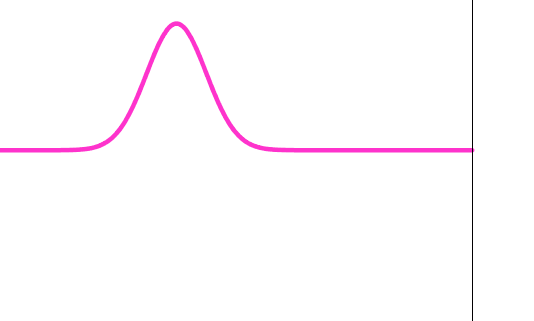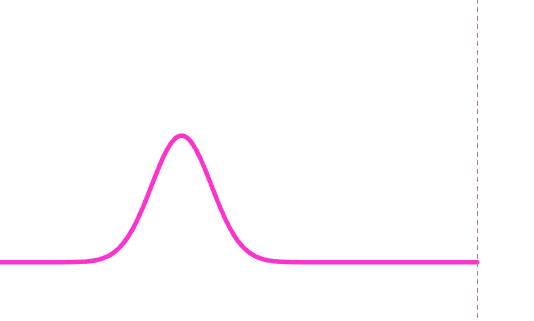|
When a wave reaches a boundary, a point where the medium changes, three things occur. Some of the wave is transmitted on into the new medium, some of the wave is reflected back into the original medium, and some of the wave energy is absorbed. Lets examine the reflection process.  Reflection off a More Rigid Medium (fixed end) When a wave reaches a boundary and needs to move into a more rigid medium, some of the wave energy reflects back into the original medium. The animation above shows an example of a wave pulse refelcting off of a more rigid medium. The reflected wave is inverted (relative to the orientation of the original wave pulse).  Reflection off a Less Rigid Medium (free end) When a wave reaches a boundary and needs to move into a less rigid medium, some of the wave energy reflects back into the original medium. The animation above shows an example of a wave pulse refelcting off of a less rigid medium. The reflected wave pulse is upright (on the same side of the equilibrium position as the original wave pulse). The animations above show the entire wave pulse reflecting back into the original medium. In reality, some of the wave pulse energy would be transmitted into the new medium, and the reflected pulse would have a smaller amplitude (less energy) than the original pulse. Notice also that the speed of the reflected wave pulse is the same as that of the incident wave pulse. The speed depends on the medium, and the reflected pulse is still in the original medium, so it has the same speed as the incident pulse. Use the simulation below to explore the reflection process in more detail. It allows you to see how the incoming pulse and the reflected pulse combine to form the actual pulse seen on the string. |